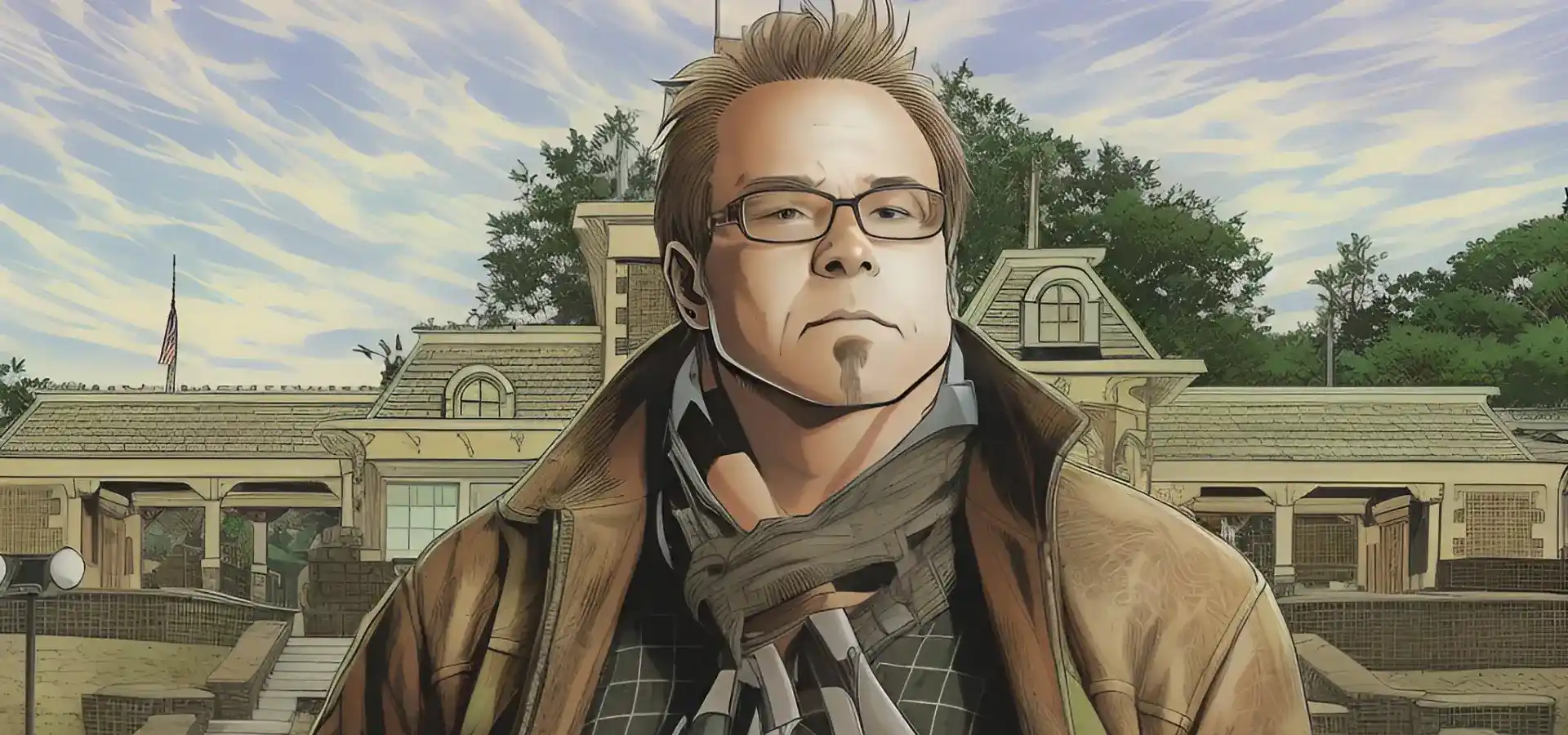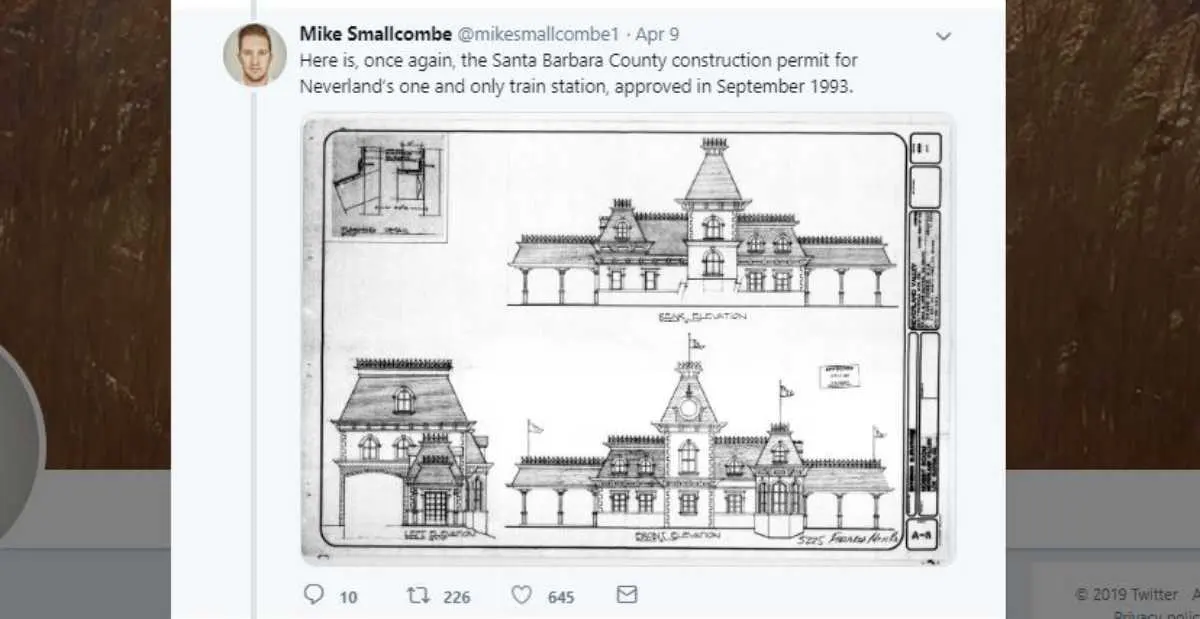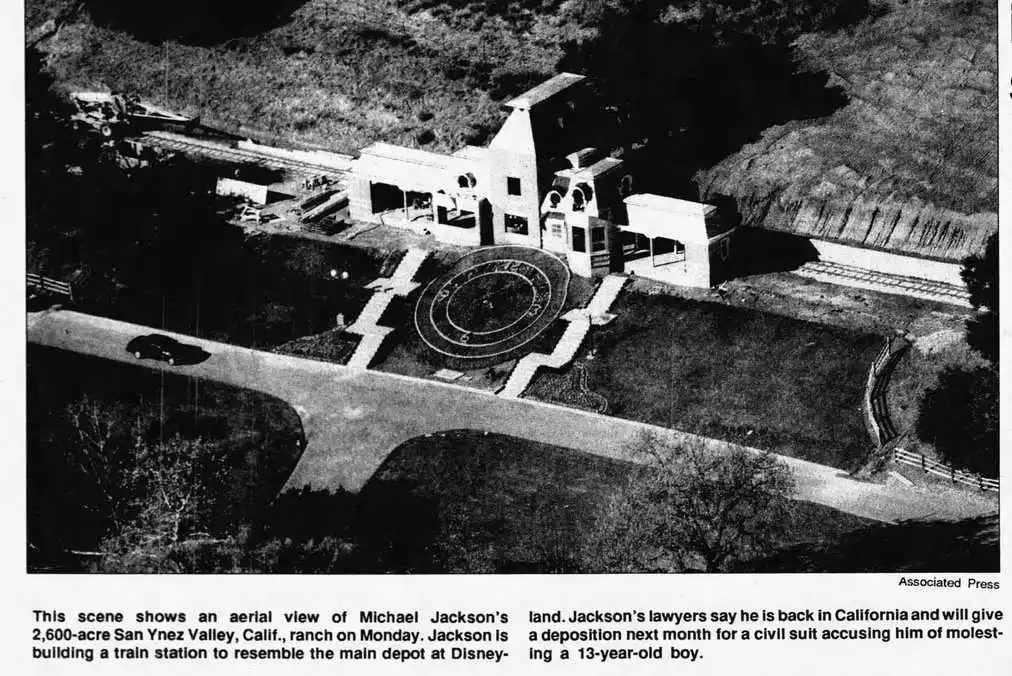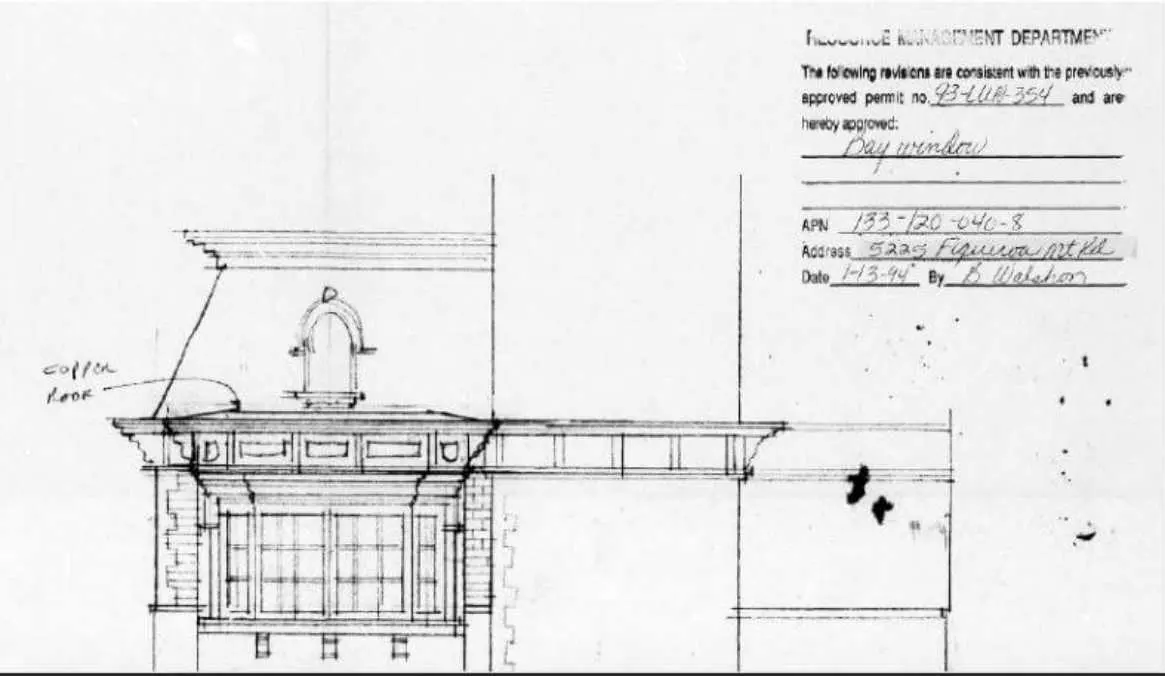
Dissecting Harrison Funk’s Statements on Neverland’s Train Station


Aug 10, 2019
It has been a lengthy process, but British tabloids have now picked up on Harrison Funk’s claims that the Neverland train station was built before a planning permit had been issued.
Speaking on an MJ Cast podcast in February 2019, Funk stated emphatically that Jackson had instructed him on two separate occasions not to photograph the train station, as it had not yet received its planning permit. He further alleged that Jackson was unwilling to discuss the matter over the telephone, fearing that their conversation might be monitored by local authorities or others.
His exact words are:
I was up there for three days, photographing the statues in situ and also the train station, and I called him, and he said, “Don’t photograph the train station.”
I said, “Why?” and he said, “Just don’t photograph the train station.” Then he called me back and said, “I need to talk to you, but I can’t on this line, as I don’t know who is listening.”
Apparently, he didn’t want the train station photographed, as he had put it up without permission initially and was fighting with the county about it being there.
Of course, they let it be there. Whatever he had to do to make it stay, he made it stay.
To listen to the full podcast, visit YouTube. Alternatively, you can play a condensed version by clicking the icon below.
In the Leaving Neverland documentary, James Safechuck alleges that Jackson sexually abused him between the ages of 10 and 14 in various locations at Neverland, including the train station. However, according to Mike Smallcombe, the train station did not receive planning permission until September 1993 and did not open until early 1994—more than a year after Safechuck claims the abuse had ended.

Given Mike Smallcombe’s affiliations with Mirror Online, Mail Online, The Express, The Metro and other tabloids, it is unsurprising that the attention‑grabbing narrative questioning James Safechuck’s abuse at the train station gained widespread coverage.
Although Harrison Funk has made certain claims, he has notably refrained from coming to Safechuck’s defence by confirming the existence of the train station prior to September 1993. Instead, he has accused Dan Reed, the director of Leaving Neverland, of misrepresenting his statements.
After these comments came to light, Reed tweeted:
The train station - one of many #neverland locations where #jamessafechuck was abused - was already complete before the 1993 construction permit was approved, says #MichaelJackson personal photographer @harrisonfunk in an engagingly candid Jan 2019 podcast.
View original tweet here.
Funk's reply was:
You may try to twist public opinion of someone’s character who is no longer here to defend himself but you will not twist my words in defense of my friend. Remove your lies Dan.
View original tweet here.
Funk then continued:
It’s very easy to convince people of bs when you only tell one side of an issue...or is it? This was not a doc it was a mockumentary created to make money for Reed and Oprah. Again I ask, who funded this mess in the first place?
View original tweet here.
He later added:
The photo shoot that I was referring to happened in JUNE, 1994, definitely NOT BEFORE. I refuse to engage with the people attempting to twist my words to fit their agenda.
View original tweet here.
Harrison Funk’s tweets contain several inaccuracies. Firstly, Dan Reed did not distort his words; he simply quoted Funk verbatim.
According to Mike Smallcombe, the Neverland train station was granted planning permission in early September 1993. Smallcombe even shared a screenshot of the official plans as evidence.
In the podcast, Funk makes no mention of the train station being incomplete or resembling a building site. On the contrary, he was photographing statues directly in front of the station.
If the entire photo shoot took place in June 1994, why would Jackson have explicitly instructed him not to take photographs due to the absence of a permit? By then, 8–9 months had passed since the permit was issued, and the station was fully completed and operational with a new larger train.
The Chippewa Herald Telegram published a photograph of the train station on Tuesday, 14 December 1993, showing the building nearing completion. Although the origin and precise date of the photograph remain uncertain, it demonstrates that the station was publicly acknowledged by mid‑December 1993.

A Hard Copy video featuring Diane Dimond confirms that Jackson welcomed guests and children to Neverland Ranch in January 1994 to commemorate Martin Luther King’s birthday, during which he unveiled his new steam engine train for the first time.
Given that camera crews were permitted into Neverland on that date, it raises the question of why Jackson explicitly instructed him not to photograph the train station in June 1994—particularly when a camera crew and guests had already seen it five to six months earlier.
On 9 August 2019, I highlighted these details to Harrison Funk, who once again declined to provide a plausible explanation for why he was not allowed to photograph it in June 1994.
I tweeted:
TV crews were invited into Jacko's ranch on the 15th of January 1994 to film his new steam train. Chippewa Herald Telegram published a picture of the train station in Dec 93. But Harrison Funk wasn't allowed to photograph it 6 months later?
View original tweet here.
Funk tweeted:
The photo in the 12/13/93 Chippewa Herald Telegram shows a construction site. You need to stop harassing me with your lies. Pick another scapegoat for your crap. 12/93 too late to fit the JS BS narrative.
View original tweet here.
I tweeted:
It shows a fully erected train station nearing completion. I'm not making you a scapegoat, I'm just highlighting the fact that you're not being honest after you inadvertently revealed Jackson built the main train station before the September permit.
View original tweet here.
Funk tweeted:
I guess you know NOTHING about construction. The photo reveals a skeleton of a building with some unfinished wood exterior. It would not have a c of o at that point. Stop grasping at straws, I didn’t inadvertently “reveal” anything. I stated a fact from 1994.
View original tweet here.
I tweeted:
But, you're implying that the entire structure was a secret, and couldn't be photographed under any circumstances. You confidently claim that Jackson built it without a permit, initially. That permit was in September 93.
View original tweet here.
After pointing out to another Twitter user, @SkepticOnSite, that the video featuring Diane Dimond is evidently from January 1994, he replied:
Don’t jump the gun Who...there is no train station shown in the video...not even a shadow. The train, I believe, was delivered in Dec, 1993. None of this correlates to JS’ allegation of abuse that ended in 1992. Walk away...
View original tweet here.
I tweeted:
Oh, come on Harrison, we were just talking about a newspaper article that was published in December 1993, which clearly shows the massive structure of the train station. I think that would cast a shadow, yes?
View original tweet here.
Subsequently, Harrison Funk began posting increasingly conspiratorial tweets:
All of this twisting and double talk makes me wonder if Who is actually Dan Reed or one of his Amos people. Seems the same M.O..
View original tweet here.
I tweeted:
Again, Harrison, you dodged the question. How is it that you weren't allowed to take photographs in June 94, despite 2 TV crews filming the steam train just metres away from the station in Jan 94, and a newspaper publishing at least one pic in 93? I'm not a gullible Jacko Stan.
View original tweet here.
As is evident, Harrison Funk steadfastly refuses to provide a reasonable explanation for why he was prohibited from photographing the train station if it was indeed June 1994. Instead, he veers into far-fetched conspiracy territory, suggesting that the photograph published by the Chippewa Herald Telegram in December 1993 could not be authenticated by the council because it depicted only a “skeleton” building—despite its near completion and the existence of a one-mile-long concrete foundation for the track.
Predictably, staunch supporters have rushed to Funk’s defence. Their speculation centres on the idea that Jackson modified the original train station plans without notifying the local planning department, implying that Funk’s conversation with Jackson related to these alterations.
It is true that the final train station deviated somewhat from the original permit, incorporating two small storage rooms at the end of the structure and varying window sizes (see example below).

It is not unusual for buildings to deviate from their original plans for a variety of legitimate reasons, such as structural complications, shortages of materials, unforeseen costs, or client-requested alterations.
Although I cannot personally comment on the inner workings of the Santa Barbara planning department, it seems highly improbable that the modifications made by Jackson or his contractors would have required the original plans to be discarded altogether.
In fact, evidence provided by Jackson’s own supporters indicates that any alterations were submitted to the planning department and approved as early as January 1994—well before Harrison’s “I can’t talk about it” remark in June of that year.

However, all of that is irrelevant. As noted earlier, the photograph published in December 1993 shows the train station in its completed form, with both end extensions and window apertures clearly visible. The only elements missing are the external cladding and finer details. Harrison continues to insist that he was forbidden from taking any photographs or even speaking on the telephone, fearing discovery by the local council. He makes no reference to alterations or other specifics, maintaining instead that Jackson constructed an entire train station without a permit.
There is no denying that the train station featured in Leaving Neverland was constructed sometime after September 1993. Moreover, it is indisputable that the station received a permit not only for the original structure but also for subsequent minor modifications well before June 1994.
Harrison Funk’s statements make little sense—unless, of course, he is implying that Jackson had built and later demolished a different train station before the one in question was erected and completed.
Despite the contradictory evidence, Harrison appears reluctant to admit to fabricating the entire scenario, or even to concede that Jackson may simply have been mistaken.
Listening to Harrison on the podcast, it becomes clear that he is a man with an abundance of stories, many of which are embellished or entirely invented. Even The Guardian acknowledges that Harrison is an extravagant storyteller.
In any case, Harrison Funk has directly contradicted the findings of Mike Smallcombe, though neither of them is willing to acknowledge it.
Once again, this illustrates the type of individuals Jackson surrounded himself with: people unwilling to engage in civil, fact-based discussion, preferring instead to accuse others of being “haters” or of distorting their words—even when those words are quoted verbatim.
Similar Posts